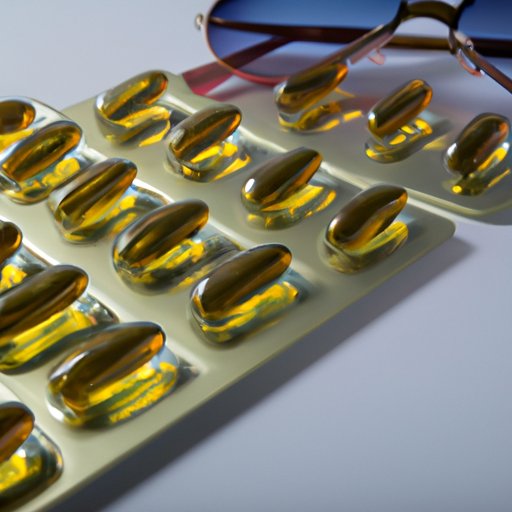
Do Tanning Beds Provide Vitamin D? An In-Depth Look
Vitamin D is an essential nutrient for the human body, playing a crucial role in bone health, immune function, and many other bodily processes. The primary source of vitamin D is the sun, which triggers the production of vitamin D in the skin. However, some people turn to tanning beds as a way to supplement their vitamin D intake. In this article, we’ll explore the connection between tanning beds and vitamin D, and the risks and benefits associated with tanning bed use for vitamin D supplementation.
The Pros and Cons of Using Tanning Beds for Vitamin D Supplementation
Tanning beds have been promoted as a convenient way to get vitamin D during the winter months or for people living in regions with limited sunlight. While there are some benefits to using tanning beds for vitamin D, the risks associated with tanning bed use often outweigh any potential benefits.
Some of the benefits of using tanning beds for vitamin D supplementation include:
- Increased vitamin D levels
- Improved mood
- Reduced risk of osteoporosis and some forms of cancer
However, there are also many risks associated with tanning bed use, including:
- Elevated risk of skin cancer, including melanoma
- Increased risk of burns and skin damage
- Damage to the eyes, including cataracts and macular degeneration
- Potential interactions with medications
In addition, the benefits of using tanning beds for vitamin D can often be achieved through safer alternatives, such as vitamin D supplements or fortified foods.
The Scientific Evidence Behind the Tanning Bed and Vitamin D Connection
Tanning beds work by emitting UV radiation, which triggers the production of vitamin D in the skin. However, the amount of UV radiation required to produce vitamin D is much lower than the amount of radiation emitted by tanning beds.
Several studies have explored the connection between tanning bed use and vitamin D levels. Some studies have found that tanning bed use can increase vitamin D levels, while others have found no significant difference between tanning bed users and non-users. However, the risks associated with tanning bed use often outweigh any potential benefits for vitamin D production.
The Dangers of Relying on Tanning Beds for Vitamin D Intake
The risks associated with tanning bed use are numerous, especially when used as a source of vitamin D. Tanning beds emit high levels of UVA and UVB radiation, which significantly increases the risk of skin cancer and skin damage.
In addition, excessive tanning bed use can result in premature aging, sunburn, and other skin-related issues. Furthermore, relying on tanning beds for vitamin D production can also lead to overexposure and even toxicity, as the body is not able to regulate vitamin D production as effectively as it can with natural sun exposure.
It’s important to remember that while vitamin D is important for overall health, it’s not worth risking your health by relying solely on tanning beds for vitamin D production.
Comparing Tanning Beds to Other Sources of Vitamin D
While tanning beds can provide some vitamin D, there are safer and more effective ways to meet your daily vitamin D requirements. Here are some alternatives to tanning beds:
Natural Sun Exposure: Spending time outside in the sun is the most effective way to produce vitamin D. However, it’s important to take appropriate precautions, such as wearing sunscreen and limiting exposure to peak sun hours.
Vitamin D Supplements: Vitamin D supplements are a safe and effective way to meet your daily vitamin D requirements. Supplements come in various forms, including pills, gummies, and drops, and can be found at most health food stores and pharmacies.
Fortified Foods: Many foods, including milk, cereals, and orange juice, are fortified with vitamin D and can provide a significant source of the nutrient.
UVB Lamps: UVB lamps emit safer levels of UVA and UVB radiation and can be an effective way to produce vitamin D. However, they should be used under the supervision of a healthcare professional.
The Role of Diet and Supplements in Maintaining Optimal Vitamin D Levels
While sun exposure and tanning beds can provide vitamin D, diet and supplements also play a crucial role in maintaining optimal vitamin D levels.
Some of the best dietary sources of vitamin D include:
- Fatty fish, such as salmon and mackerel
- Egg yolks
- Cheese
- Mushrooms
In addition to a healthy diet, taking vitamin D supplements can help ensure that you’re meeting your daily vitamin D requirements. The recommended daily intake of vitamin D varies depending on your age, sex, and other factors. However, most adults need between 600 and 800 IU of vitamin D per day.
Conclusion
Vitamin D is an essential nutrient for the human body, playing a vital role in many bodily processes. While tanning beds can provide some vitamin D, they also come with significant risks that often outweigh any potential benefits. Instead, focus on natural sun exposure, dietary sources, and supplements to meet your daily vitamin D requirements. Taking care of your health should always come first, and avoiding tanning beds is one way to do just that.




